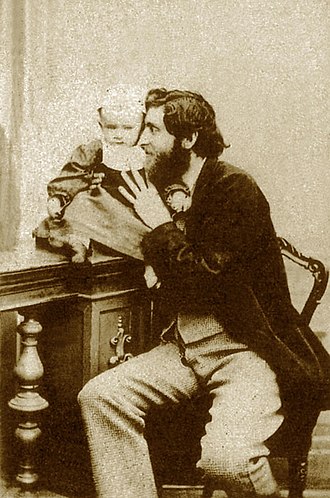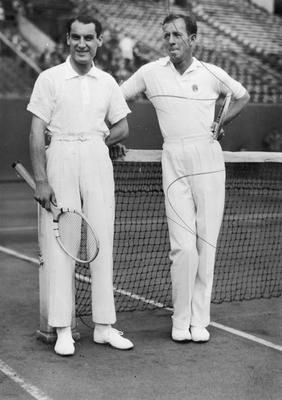Discover Your Roots
SIGN UPDiscover Your Roots
SIGN UPGiorgio is a male name of Italian origin, meaning "Farmer." It is a popular name in Italy and is associated with traits of hard work and connection to the land. The name Giorgio may refer to various notable figures, including Italian record producer Giorgio Moroder and characters from video games and songs. Additionally, it is linked to places such as Castel Giorgio in Umbria, Italy, and the prestige fragrance brand Giorgio Beverly Hills. The name's historical and cultural significance is reflected in its presence in various aspects of Italian society. Giorgio is a name that carries a sense of tradition and strength, embodying the values of dedication and agricultural heritage.

Giorgio Gaber, born on January 25, 1939, was an influential Italian singer-songwriter, composer, actor, playwright, and musician. He was a talented guitar player and co-created one of the first rock songs in Italian, "Ciao ti dirò," in 1958. Alongside Sandro Luporini, he pioneered the musical genre known as teatro canzone or 'theatre song.' Gaber's musical journey began in Milan, where he overcame a hand injury through playing the guitar. His artistic talents led him to collaborate with renowned musicians and secure a contract with Dischi Ricordi. Throughout his career, Gaber ventured into acting, music composition, and theater, earning recognition for his thought-provoking songs. He participated in the Sanremo Music Festival and received prestigious awards for his contributions to the music industry. Tragically, Gaber succumbed to lung cancer on January 1, 2003, leaving behind a lasting legacy. His impact on Italian music and culture continues to be celebrated, with his work being honored through various tributes and accolades.

Giorgio Sommer (2 September 1834 – 7 August 1914) was a prominent and prolific photographer of the 19th century. Born in Frankfurt, he initially studied business before venturing into photography. Sommer's work encompassed a wide array of subjects, including archeological ruins, landscapes, art objects, and portraits. He established his first photography studio in Switzerland, where he produced mountain relief images for the Swiss government. Later, he moved his business to Naples and formed a partnership with fellow photographer Edmund Behles, expanding their operations to become one of the largest and most prolific photography concerns in Italy.Sommer's extensive catalog featured images from various iconic locations, such as the Vatican Museums, the National Archeological Museum at Naples, and the Roman ruins at Pompeii. He also captured everyday scenes in Naples, publishing a comprehensive album titled Dintorni di Napoli. Notably, Sommer documented a significant eruption of Mount Vesuvius in 1872, showcasing his exceptional talent in capturing natural phenomena.His contributions to photography were widely recognized, earning him honors and prizes in exhibitions across Europe. Sommer's versatility extended to various photography formats, and he was appointed the official photographer to King Victor Emmanuel II of Italy at one point. His legacy lives on through his numerous images, albums, and postcards, reflecting his profound impact on the art of photography. Giorgio Sommer's remarkable work continues to be celebrated and studied, cementing his status as a pivotal

Giorgio de Stefani, born on February 24, 1904, was a prominent Italian tennis player known for his ambidextrous skills. He achieved international recognition, ranking as the no. 6 amateur player in the world by The Literary Digest in 1934. Throughout his career, de Stefani won an impressive 85 singles titles and held various championship titles in countries such as Argentina, the Netherlands, Libya, and Switzerland.De Stefani's early success in tennis was marked by his victory at the Montreux tournament in 1920 at the age of 15. His tennis journey continued to flourish, culminating in notable achievements such as winning the doubles title at the Italian Internationals and the Cannes L.T.C. doubles title. Moreover, he was a key member of the Italy Davis Cup team, contributing to a 44/22 (66%) winning record.Beyond his athletic accomplishments, de Stefani made significant contributions to the tennis community. He was elected to the International Olympic Committee and served as the head of both the Italian and International Tennis Federation on several occasions.Giorgio de Stefani's legacy as a versatile and accomplished tennis player continues to inspire athletes and enthusiasts worldwide. His remarkable achievements and dedication to the sport solidify his enduring impact on the tennis world.

Giorgio Angelo Radovani (1734–1790) was an influential figure in the Roman Catholic Church, hailing from İşkodra (Shkodër), which was part of the Ottoman Empire at the time, now modern northern Albania. Serving as the apostolic vicar of the Diocese of Sofia and Plovdiv from 1767 to 1771, he later became the Bishop of Shkodër. Radovani's contributions included the establishment of the diocese's first Catholic school in the village of Sheldi and the submission of his Albanian translations of Catholic prayers for publication to the Propaganda Fide in 1776. His significance extended to his role as the Archbishop of Antivari from 1787 until his passing in 1790. Notably, in 1788, he mediated negotiations between the Holy Roman Emperor, Joseph II, and Kara Mahmud Bushati, aiming to forge an anti-Ottoman alliance between the two factions. Radovani's legacy lives on as a pivotal figure in the historical and religious landscape of Albania.

Giorgio Blais is a renowned major-general of the Italian Army who gained widespread recognition for his remarkable solo journey across Italy from Piedmont to Sicily in the summer of 2000. Covering a distance of 1700 km, he embarked on this extraordinary endeavor, commencing from the summit of Rocciamelone on June 16 and reaching the flank of Mount Etna on August 5. His mission, famously dubbed as "my reckless walk through Italy," aimed to spread a message of brotherhood and national identity to the 42 stopover towns along his route. In honor of his remarkable feat, he was appointed Grand Officer by the President of Italy, Carlo Azeglio Ciampi, on December 27, 2003. Throughout his illustrious career, Giorgio Blais has served in various capacities within the Italian Army, including international missions in the Balkans, where he has accrued significant expertise. His diverse roles have encompassed serving as the Director of Military Studies at the International Institute of Humanitarian Law and conducting human rights and international humanitarian law courses for government officials in Iraq and Kurdistan. Moreover, his contributions as a professor and his notable achievements have been recognized with prestigious awards, including the Commander Order of Merit and the Grand Officer Order of Merit of the Italian Republic. Giorgio Blais continues to inspire others with his remarkable accomplishments and unwavering dedication to promoting unity and national pride.
All images displayed on this page are sourced from Wikipedia or Wikimedia Commons.We use these images under their respective Creative Commons or public domain licenses. Wherever applicable, author attributions and license information are provided. If you believe an image is used incorrectly or outside its license terms, please contact us so that we can review and correct the issue.